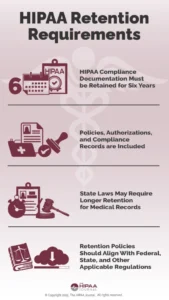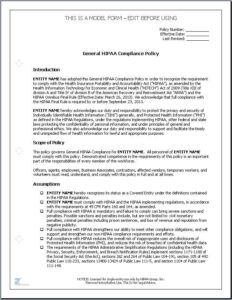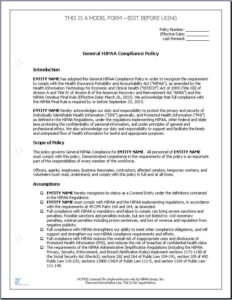Keeping your healthcare organization compliant with HIPAA isn’t just a good idea, it’s the law. But let’s be honest, wading through the regulations and ensuring your documentation is always up-to-date can feel like a monumental task. One of the most crucial aspects of HIPAA compliance is having a clear and well-maintained documentation updating policy. Think of it as your roadmap to staying on the right side of HIPAA. It’s not about creating a document and forgetting about it; it’s about actively managing and evolving your policies and procedures. After all, HIPAA regulations, technology, and your own organization’s practices are constantly changing.
Why is this so important? Well, imagine a scenario where a breach occurs. One of the first things auditors will look at is your documentation. Are your policies and procedures up-to-date? Do they accurately reflect your current practices? A solid documentation updating policy demonstrates your commitment to protecting patient information and can significantly mitigate potential penalties in case of a violation. A poorly maintained policy, on the other hand, can be a red flag, suggesting a lack of attention to compliance and potentially leading to more severe consequences.
Having a HIPAA documentation updating policy template in place can significantly streamline the process. It provides a framework to guide you through the necessary steps, ensuring you cover all the essential elements. This isn’t just about avoiding fines; it’s about building trust with your patients and demonstrating your dedication to safeguarding their privacy. So, where do you even begin to create a good HIPAA documentation updating policy? Let’s break it down.
Why You Need a Rock-Solid HIPAA Documentation Updating Policy
A comprehensive HIPAA documentation updating policy is the backbone of your compliance efforts. It ensures that your organization’s policies and procedures related to protected health information (PHI) are not only initially compliant but also remain so over time. This is critical because HIPAA regulations are subject to change, and your organization’s internal processes may also evolve. Imagine creating a perfect HIPAA policy today, only to find out that a new regulation or technological advancement renders it obsolete next year. Without a proper updating policy, your organization is at risk of non-compliance and potential penalties. Consider the peace of mind that comes with knowing you’ve got this covered!
Beyond regulatory compliance, a well-defined policy promotes a culture of security and privacy within your organization. It reinforces the importance of safeguarding PHI and empowers employees to take ownership of their roles in protecting patient data. It’s not just a legal requirement; it’s about building a responsible and ethical healthcare environment. Think of it as fostering a sense of collective responsibility where everyone understands their part in the bigger picture of data protection. It creates transparency and accountability.
The key to a successful HIPAA documentation updating policy lies in its practicality and enforceability. It should be clear, concise, and easy to understand by all employees, regardless of their technical expertise. Avoid using overly complex legal jargon that may confuse or intimidate staff. Instead, focus on using plain language and providing concrete examples of how the policy applies to their daily tasks. The goal is to make compliance accessible and understandable, not an abstract concept.
Furthermore, your policy should outline specific procedures for identifying, evaluating, and implementing necessary updates. This includes designating responsible individuals or teams to oversee the process, establishing a schedule for periodic reviews, and providing training to employees on new or revised policies. Don’t forget to document all updates and revisions, including the date, author, and reason for the change. This creates an audit trail that demonstrates your organization’s commitment to continuous improvement and compliance. Having a good process can simplify your life when you have to show that you are HIPAA compliant.
Finally, your policy should address the handling of outdated or obsolete documentation. It’s essential to have a clear process for archiving or destroying old versions of policies and procedures to prevent confusion or misuse. Ensure that employees understand which version of a document is the most current and how to access it. A central repository for all HIPAA-related documentation is highly recommended to streamline access and maintain version control.
Key Elements of a HIPAA Documentation Updating Policy Template
A well-structured HIPAA documentation updating policy template should include several key elements to ensure comprehensive coverage. First and foremost, it should clearly define the scope of the policy, specifying which types of documentation are subject to the updating process. This may include policies and procedures related to privacy, security, breach notification, and other HIPAA requirements. Be specific about what is covered. Don’t leave any room for misinterpretation or confusion. This will help avoid errors.
The policy should also outline the roles and responsibilities of individuals or teams involved in the updating process. This may include a HIPAA compliance officer, privacy officer, security officer, and other relevant personnel. Clearly define who is responsible for identifying the need for updates, reviewing and approving changes, and communicating updates to employees. Assigning specific responsibilities ensures accountability and prevents tasks from falling through the cracks.
A crucial component of the policy is the establishment of a schedule for periodic reviews. This schedule should specify how often each type of documentation will be reviewed to ensure its accuracy and relevance. The frequency of reviews may vary depending on the nature of the documentation and the likelihood of changes in regulations or internal processes. A proactive approach is key to staying ahead of the curve.
The policy should also detail the process for identifying and evaluating the need for updates. This may involve monitoring regulatory changes, conducting risk assessments, and soliciting feedback from employees. Establish clear criteria for determining when an update is necessary, such as changes in HIPAA regulations, technological advancements, or internal process improvements. Having clear requirements prevents random changes.
Finally, the policy should address the communication and training of employees on updated documentation. This may involve providing training sessions, issuing written notices, or utilizing online communication channels. Ensure that employees understand the changes and how they impact their roles and responsibilities. Document all training activities to demonstrate compliance and provide evidence of employee awareness.
Remember, a successful HIPAA documentation updating policy template is not a static document. It should be reviewed and updated regularly to ensure it remains relevant and effective. By following a structured approach and incorporating the key elements, your organization can effectively manage its HIPAA compliance and protect patient privacy. Using a hipaa documentation updating policy template is the first step.
In conclusion, actively managing and maintaining your HIPAA documentation is more than just checking a box; it’s about establishing a culture of privacy and security within your organization. It’s about proactively anticipating change and ensuring that your policies and procedures are always aligned with the latest regulations and best practices.
By prioritizing a well-defined and consistently updated HIPAA documentation updating policy, you’re not only safeguarding patient information but also building trust with your patients and demonstrating your commitment to ethical and responsible healthcare practices. That peace of mind is invaluable.



